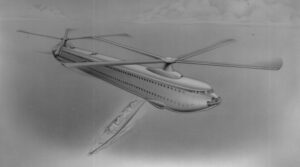
Though we spend ample time examining consumer-based AR endpoints, greater near-term impact is seen today in the enterprise. This takes many forms including camera commerce and collaboration. But the greatest area of enterprise AR impact today is in industrial settings.
This includes AR visualization to support assembly and maintenance. The idea is that AR’s line-of-sight orientation can guide front-line workers. Compared to the “mental mapping” they must do with 2D instructions, line-of-sight support makes them more effective.
This effectiveness results from AR-guided speed, accuracy, and safety. These micro efficiencies add up to worthwhile bottom-line impact when deployed at scale. Macro benefits include lessening job strain and the “skills gap,” which can preserve institutional knowledge.
1. How VR could bring transhumanism to the masses
2. How Augmented Reality (AR) is Reshaping the Food Service Industry
3. ExpiCulture — Developing an Original World-Traveling VR Experience
But how is this materializing today and who’s realizing the above enterprise AR benefits? Our research arm ARtillery Intelligence tackled these questions in its report: Enterprise AR: Best Practices & Case Studies, which we’ve excerpted below, featuring Elekta Medical and PTC.
One foundational concept in enterprise AR is digital twins. These are digital replicas of real-life equipment. The benefit of having this digital counterpart is that activities such as product design, testing, and monitoring can happen in simulated environments.
Much like last week’s Medtronic case study, operating in simulated ways can bring several benefits. In that case, it was all about surgeon training in non-invasive ways. But it can equally apply to industrial settings, where expensive machinery can be optimized through digital twins.
Putting this into practice, Medical technology provider Elekta Medical launched a digital-twin-based program with the help of PTC. Known as the Connected Field Service program, it works with remote digital twins of its deployed medical equipment to monitor behavior.
By doing so, it increased equipment uptime and resolved 20 percent of service issues remotely. It also achieved uninterrupted treatments for more than 14,000 patients in the program’s first year. It was also able to use digital twin data to optimize logistics such as its delivery network.
Backing up, digital twins were first used in experimental engineering for NASA. Here it wasn’t a matter of cost (though that plays in), but practicality. Because physical systems can’t be easily tested in space, digital twins can help engineers get a better sense of material properties.
This particular use case for digital twins dates back to the Apollo 13 mission, but digital twins have since blossomed into several areas. Though the stakes aren’t often as high in a manufacturing facility as in an aerospace mission, there are meaningful benefits and financial outcomes.
The way this often works is through industrial internet of things (IoT) whereby equipment is embedded with several sensors. This creates a sort of living, breathing digital replica of not only a device’s physical orientation but its real-time performance readings or threshold anomalies.
Knowing this data can unlock several advantages such as proactive maintenance or optimizing workflows. Beyond diagnostics, digital twins come into play when a machine needs maintenance: AR-guided line-of-sight instructions can overlay digital twins on physical equipment.
Other advantages include digital records for the lifetime stats of equipment. These stats can be delivered to AR glasses in the above maintenance scenarios to layer in additional intelligence about a given piece of equipment. This can boost first-time fix rates, among other things.
We’ll pause there and circle back in the next installment with another enterprise AR case study…
Header image credit: Esri
- &
- 000
- 7
- activities
- Additional
- Aerospace
- All
- among
- apollo
- AR
- AR Glasses
- AREA
- ARM
- Augmented Reality
- augmented reality (ar)
- BEST
- best practices
- breathing
- case study
- cases
- Circle
- credit
- data
- Dates
- delivery
- Design
- digital
- digital twin
- Digital twins
- Effective
- Engineering
- Engineers
- Enterprise
- Enterprise AR
- equipment
- EU
- EV
- EY
- Facility
- financial
- First
- Fix
- food
- food service
- front-line
- gap
- glasses
- guide
- GV
- here
- High
- How
- HP
- hr
- HTTPS
- ia
- idea
- image
- Impact
- Including
- industrial
- Insider
- Institutional
- Intelligence
- Internet
- internet of things
- iot
- issues
- IT
- Job
- knowledge
- logistics
- Macro
- manufacturing
- medical
- medical equipment
- medium
- Mission
- monitoring
- Nasa
- network
- operating
- Other
- patients
- performance
- Product
- product design
- Program
- ptc
- Rates
- real-time
- Reality
- records
- report
- research
- Results
- Safety
- Scale
- sense
- sensors
- So
- Space
- speed
- spend
- stats
- Study
- support
- Systems
- Technology
- Testing
- time
- Training
- visualization
- vr
- workers
- works
- year




